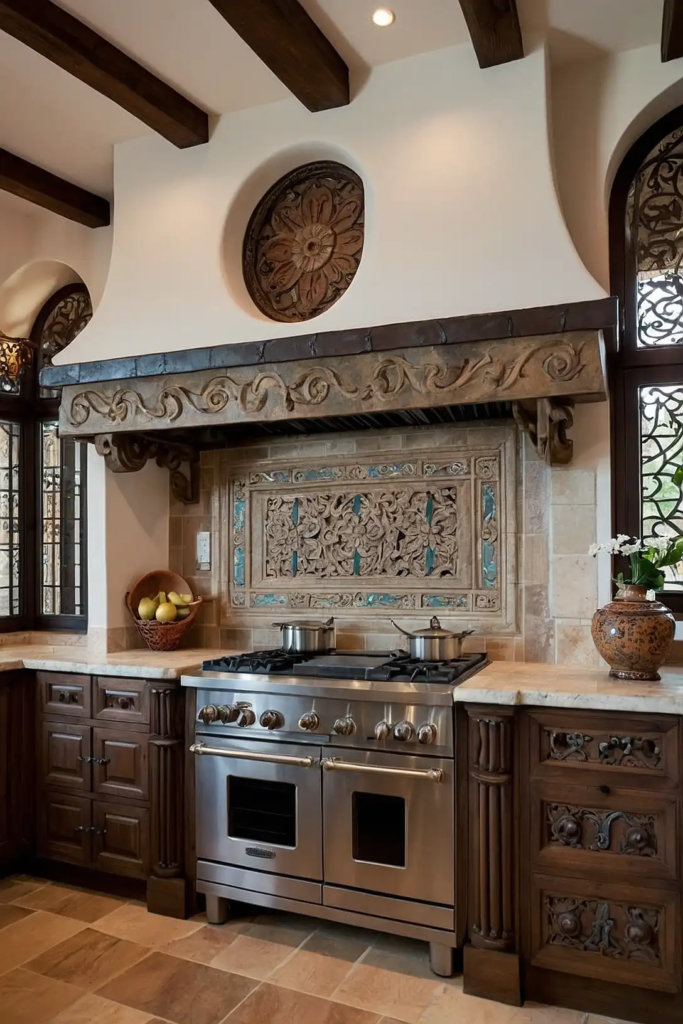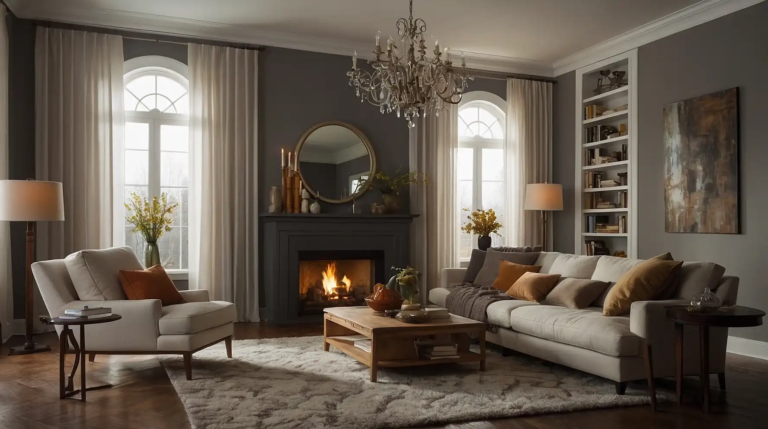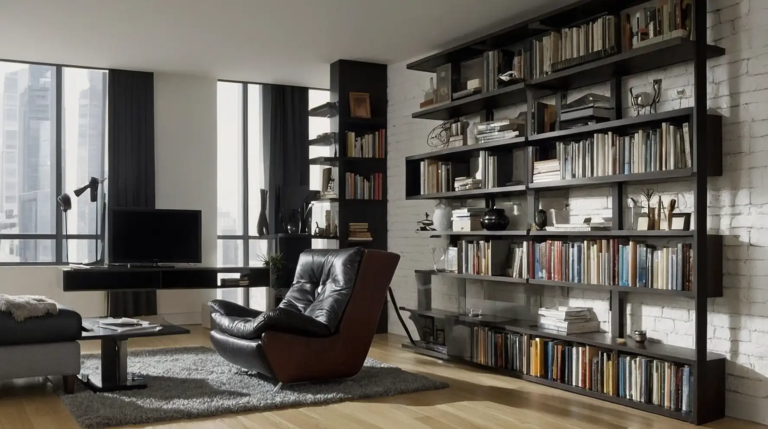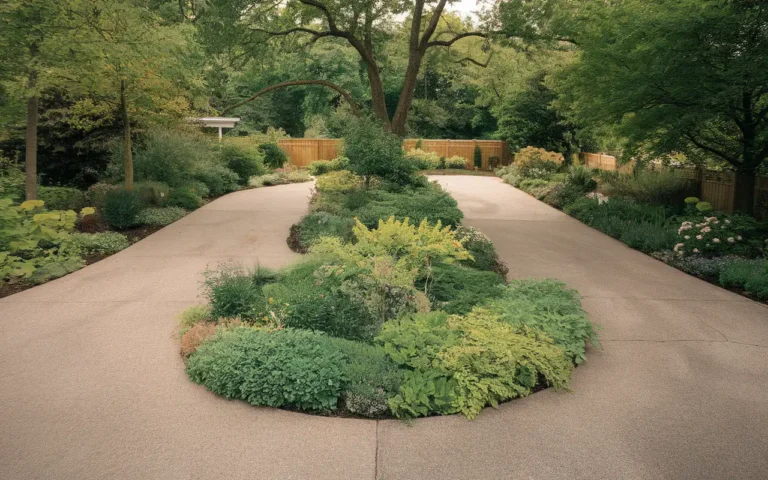27 Best Spanish Mediterranean Kitchen Ideas That Will Transport You to the Sunny Coastline
Spanish Mediterranean kitchens combine old-world charm with sun-drenched warmth to create spaces that feel both timeless and welcoming.
These distinctive designs draw inspiration from Spain’s coastal regions, blending functionality with rustic elegance.
The hallmarks of this style include rich textures, vibrant accents, and natural materials that evoke the relaxed yet sophisticated atmosphere of Mediterranean living.
Your kitchen becomes not just a cooking space, but a gathering place filled with character.
Ready to transform your kitchen into a Spanish-inspired haven?
These 27 ideas will help you capture that coveted Mediterranean magic, whether you’re planning a complete renovation or simple decorative updates.
1: Hand-Painted Ceramic Tiles

Install colorful hand-painted tiles as a backsplash to instantly infuse Spanish character into your kitchen.
Look for traditional patterns in blues, yellows, and greens that tell a visual story across your wall.
Choose either full wall coverage for dramatic impact or create a framed section behind your stove or sink as a focal point.
Mix different patterns within the same color family for an authentic, collected-over-time appearance that adds depth and interest.
2: Warm Terracotta Flooring

Replace cold kitchen floors with warm terracotta tiles for authentic Mediterranean ambiance.
These clay-based tiles add immediate warmth with their rich, earthy reddish-brown tones.
Select irregular shapes or slightly varied colors for a more rustic, handcrafted appearance reminiscent of centuries-old Spanish haciendas.
Enhance the natural beauty with matte sealants rather than high-gloss finishes to maintain the material’s inherent character and charm.
3: Arched Doorways and Windows

Incorporate graceful arches in doorways, windows, or even range hoods to establish quintessential Spanish architectural character.
These curved elements instantly soften the kitchen’s angular lines.
Create recessed arched niches in walls for displaying pottery or storing cooking oils and spices with decorative flair.
Frame existing square doorways with archways during renovation to transform standard openings into statement architectural features.
4: Open Wooden Shelving

Install rustic wooden shelves instead of upper cabinets to display colorful dishware and create an authentic, relaxed Mediterranean feel.
Choose chunky wood with visible grain patterns for maximum impact.
Leave the wood natural or stain it in warm honey tones that complement the other elements in your Spanish-inspired space.
Use decorative metal brackets or corbels for support, adding another layer of artisanal detail to your kitchen design.
5: Wrought Iron Accents

Incorporate decorative wrought iron elements to add authentic Spanish character with minimal effort.
Hang a pot rack over your island or install custom cabinet hardware featuring traditional scrollwork.
Look for lighting fixtures, bar stools, or shelf brackets with this distinctive black metalwork for cohesive design touches throughout the space.
The dark metal creates striking contrast against light-colored walls and cabinetry while adding visual weight to the overall design.
6: Rich Warm Wall Colors

Paint your kitchen walls in warm terra cotta, golden yellow, or soft sienna tones that evoke sunbaked Spanish hillsides.
These rich hues create immediate Mediterranean atmosphere even with minimal renovation.
Focus deeper colors on feature walls while keeping other surfaces lighter to prevent the space from feeling too dark or heavy.
Consider color-washing techniques rather than flat paint applications to create depth and texture reminiscent of traditional Mediterranean plaster walls.
7: Exposed Wooden Ceiling Beams

Install or expose wooden ceiling beams to add rustic Spanish charm and architectural interest overhead. Choose rough-hewn or hand-carved beams for maximum authenticity.
Paint the surrounding ceiling white or cream to create dramatic contrast that draws the eye upward and enhances the room’s height.
The strong horizontal lines help define separate areas in open-concept spaces while maintaining the warm, hacienda-inspired aesthetic.
8: Mediterranean-Inspired Range Hood

Replace a standard range hood with a statement custom design featuring curved arches or a bell shape.
Choose materials like plaster, copper, or carved stone for authentic Mediterranean character.
Size the hood generously to create a focal point that anchors your cooking area with old-world grandeur.
Add decorative details like metal strapping, rivets, or even hand-painted tile accents for a truly customized Spanish-inspired feature.
9: Blue and White Color Scheme

Embrace the coastal colors of the Mediterranean with a blue and white palette that feels both fresh and timeless.
Use cobalt or azure blue accents against crisp white backgrounds.
Introduce these colors through removable elements like dishware, textiles, and accessories if you prefer flexibility in your design scheme.
The combination creates an immediate connection to seaside Spanish towns while providing a clean backdrop for cooking and entertaining.
10: Vintage-Inspired Farmhouse Sink

Install a deep, wide farmhouse sink in white fireclay or natural stone for practical elegance with Spanish country flair.
Choose a style with a decorative apron front for maximum visual impact.
Pair with wall-mounted brass or copper faucets positioned high enough to accommodate large pots and pans with ease.
This centerpiece combines both beauty and functionality, nodding to a time when kitchen fixtures were built to last for generations.
11: Decorative Mosaic Inlays

Create visual interest with mosaic tile inlays that add bursts of pattern and color to floors or countertops.
Design a “rug” pattern in your floor tiles or a decorative border around your cooking space.
Use traditional Spanish motifs like flowers, stars, or geometric patterns in vibrant combinations of blue, yellow, red, and green.
These artistic touches transform functional surfaces into conversation pieces that showcase the detailed craftsmanship central to Mediterranean design.
12: Open-Concept Cooking Hearth

Design your cooking area to mimic a traditional Spanish hearth with an arched alcove surrounding your range. Use stucco or stone to create this architectural feature.
Add a shelf within the arch for cooking oils and frequently used spices, combining beauty with practical accessibility.
This design element harkens back to historical Spanish kitchens where cooking hearths served as the home’s literal and figurative warm center.
13: Rustic Wood Cabinetry

Install cabinetry with visible wood grain and imperfections that embrace the natural, rustic aesthetic of Spanish design.
Choose medium to dark stains that highlight the wood’s character.
Incorporate some glass-front cabinet doors to display colorful dishes while maintaining the substantial wooden framework.
Add decorative carving or turned details on door panels or corners for authentic old-world craftsmanship that elevates basic storage.
14: Ornate Cabinet Hardware

Replace standard pulls and knobs with decorative Spanish-inspired hardware to transform basic cabinetry.
Look for hammered iron, aged brass, or painted ceramic pieces with distinctive patterns.
Choose substantial sizes that make a statement against your cabinet fronts rather than blending in unnoticed.
Mix different but complementary styles throughout the kitchen for a collected-over-time feeling that enhances the space’s authentic character.
15: Statement Pendant Lighting

Hang dramatic pendant lights with Spanish influence to create focal points and establish ambiance.
Look for fixtures featuring wrought iron, hammered metal, or colorful glass elements.
Position them strategically over islands, dining areas, or sinks where both their illumination and beauty serve practical purposes.
Choose pieces with authentic details like metal scrollwork, punched patterns, or colored glass inserts that cast interesting shadows and light patterns.
16: Stone or Plaster Wall Finishes

Apply textured plaster or stone veneer to create depth and tactile interest on kitchen walls. These treatments instantly age your space in the best possible way.
Focus this technique on a single accent wall or around a range alcove for maximum impact without overwhelming the space.
The uneven, handcrafted surface catches light beautifully throughout the day, creating subtle variations that flat paint simply cannot achieve.
17: Visible Plate Collections

Display colorful ceramic plates on walls or open shelving to add instant Mediterranean charm with minimal effort.
Mix Spanish-inspired patterns in complementary colors for visual interest.
Arrange in symmetrical groupings for formal elegance or create an organic gallery wall for a more relaxed, collected-over-time appearance.
This decorative element doubles as practical storage, keeping your favorite serving pieces easily accessible for family meals and entertaining.
18: Integrated Wine Storage

Build dedicated space for wine storage to honor the important role of wine in Mediterranean culture.
Install a simple rack under counters or create a more elaborate built-in wall system.
Choose wood and wrought iron materials that complement your other Spanish-inspired elements for cohesive design.
Position your wine display where bottles can be kept at proper temperature while still contributing to your kitchen’s visual narrative.
19: Natural Stone Countertops

Install countertops in natural stone with visible character and variation rather than perfectly uniform surfaces. Look for limestone, marble, or granite with warm undertones.
Choose honed or leathered finishes rather than high-gloss polishing to maintain the authentic, timeworn Mediterranean aesthetic.
The natural imperfections and movement in the stone add organic beauty that complements the rustic elements throughout a Spanish-inspired kitchen.
20: Terra Cotta Cookware Display

Collect and display traditional terra cotta cooking vessels as both functional tools and decorative elements.
Arrange on open shelving or hang from pot racks for immediate Spanish character.
Mix different sizes and shapes – from small cazuelas to large ollas – creating an authentic cooking collection that begs to be used.
The warm orange-brown clay color adds the perfect Mediterranean accent while connecting your modern kitchen to centuries of Spanish cooking traditions.
21: Patterned Fabric Accents

Incorporate Spanish-inspired textiles through window treatments, cushions, or table linens for color and pattern.
Look for fabrics featuring traditional motifs in vibrant Mediterranean colors.
Choose natural materials like linen or cotton with visible texture that adds depth to the overall design scheme.
These soft elements balance the hardness of tile and stone surfaces while providing easily changeable seasonal accents for your kitchen.
22: Fresh Herb Display

Create a dedicated space for growing and displaying Mediterranean cooking herbs.
Install a small wall garden near your cooking area with basil, thyme, rosemary, and oregano.
Use decorative pots with Spanish-inspired patterns or colors to enhance the visual appeal while keeping herbs conveniently accessible.
This living element adds fragrance, flavor, and connection to the Mediterranean tradition of cooking with fresh, local ingredients.
23: Copper and Brass Accents

Incorporate warm-toned metals like copper and brass to add Mediterranean warmth and luxury. Install a hammered copper sink or display collectible copper cookware.
Choose fixtures and hardware with living finishes that will develop a natural patina over time, enhancing their character and authenticity.
These rich metallic elements reflect light beautifully and create striking contrast against the earthier elements in your Spanish-inspired kitchen.
24: Decorative Ceiling Treatments

Install a decorative ceiling treatment like coffered woodwork or pressed tin panels to draw the eye upward and add architectural interest.
Paint in complementary colors or leave in natural materials.
This often-neglected surface becomes a stunning feature that enhances the room’s Mediterranean character from above.
The added dimension makes your kitchen feel more custom and thoughtfully designed, elevating the entire space with relatively simple additions.
25: Built-In Banquette Seating

Create a cozy built-in dining nook that maximizes space while adding Spanish charm.
Design with arched details or decorative woodwork that complements your kitchen’s overall aesthetic.
Add comfortable cushions in Mediterranean-inspired fabrics and patterns for both visual impact and practical comfort.
This intimate seating arrangement encourages lingering conversations, embodying the Spanish tradition of unhurried meals with family and friends.
26: Wood and Iron Furniture

Incorporate substantial wooden tables and iron-detailed chairs that bring Spanish hacienda style to your eating areas.
Look for pieces with visible craftsmanship and sturdy proportions.
Choose woods with character – like distressed oak or walnut – that develop even more personality with daily use and aging.
The substantial nature of these pieces anchors your dining space with timeless appeal that improves rather than diminishes over the years.
27: Hand-Painted Ceramic Accessories

Display hand-painted ceramic vessels as decorative accents to add authentic Spanish artisanal character.
Collect pitchers, olive jars, and serving pieces in traditional patterns and colors.
Arrange in small vignettes on countertops or shelves, creating mini still-life compositions that catch the eye.
These decorative elements tell the story of Mediterranean craftsmanship while adding personal touches that make your kitchen uniquely yours.
Conclusion
Spanish Mediterranean kitchens create a perfect blend of beauty and function through their warm colors, natural materials, and artisanal details.
Implement these ideas to transform your kitchen into an inviting space that celebrates life and good food.







